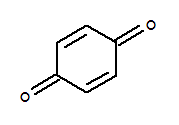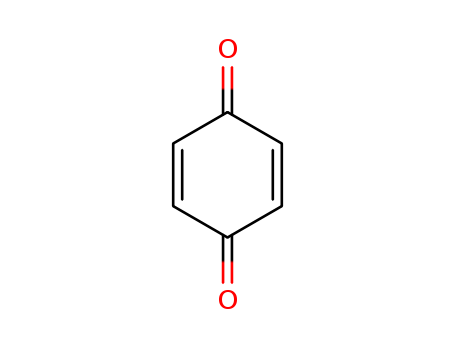10.1002/anie.201004593
The study presents an innovative approach to C-C bond formation through NHC-catalyzed Michael addition to α,β-unsaturated aldehydes, utilizing redox activation. The researchers, Suman De Sarkar and Armido Studer, explore the use of N-heterocyclic carbenes (NHCs) to activate α,β-unsaturated aldehydes, which then react with various 1,3-dicarbonyl compounds to form dihydropyranones. They demonstrate that this method is effective with different nucleophiles and enals, achieving high yields and selectivity under mild conditions. The process involves a two-step umpolung reaction at the β-position of the α,β-unsaturated aldehyde, followed by a redox-type activation. The study also includes control experiments to rule out alternative mechanisms, such as kinetic O-acylation, and provides a proposed catalytic cycle for the process. This work contributes to the field of organocatalysis by offering a new strategy for conjugate addition reactions using soft C-nucleophiles and showcases the potential of NHCs in redox activation.
10.1039/c8cc07481j
The research focuses on the development of a Pd(II)-catalyzed cross-coupling protocol for the b-C(sp3)–H activation/cross-coupling of aliphatic acid derivatives containing a-hydrogen atoms with aryltrifluoroborates. The study addresses the challenge of C(sp3)–H bond functionalization, particularly in substrates with a-hydrogen atoms, which typically suffer from issues like b-hydride elimination and slow C–H cleavage rates. The researchers engineered a weak, bidentate directing group to enhance the rate of C–H cleavage and facilitate transmetallation. The experiments involved the use of palladium acetate (Pd(OAc)2) as the catalyst, N-Ac-Ile-OH as the ligand, silver carbonate (Ag2CO3), and 1,4-benzoquinone as an additive, among other reagents, to optimize the reaction conditions and evaluate the method's potential for asymmetric b-C(sp3)–H arylation. The analyses included monitoring the reaction yields using 1H NMR spectroscopy with CH2Br2 as an internal standard and evaluating the electronic properties and steric hindrance of various directing groups to assess their influence on reactivity. The study successfully demonstrated the arylation of aliphatic acid derivatives with a range of aryltrifluoroborates, offering a promising approach for the synthesis of enantioenriched aliphatic acid derivatives.
10.1016/j.bmc.2020.115565
The research focuses on the development of potent trypanocidal drugs to combat Chagas disease, caused by the parasite Trypanosoma cruzi. The study employs Rhodium-catalyzed [2+2+2] cycloadditions, sulfonyl phthalide annulation, and nitroalkene reactions for the synthesis of 56 quinone-based compounds. These compounds were evaluated for their activity against T. cruzi, with the aim of identifying new lead compounds with potent trypanocidal activity. The experiments involved the use of various reactants, including 1,6-diynes, benzoquinones, sulfonyl phthalide, 2-nitrobenzofurans, and α-bromonitroalkenes, among others. The synthesized compounds were analyzed using techniques such as NMR, IR, HRMS, and X-ray crystallography to confirm their structures, and their trypanocidal activity was assessed through incubation with T. cruzi parasites under specific conditions, with the IC50 values determining the concentration required for 50% parasite lysis. Additionally, cytotoxicity assays on mammalian cells were conducted to evaluate the selectivity index of the compounds.
10.1002/jhet.625
The research presents the first-time synthesis and X-ray analysis of 7-bromoarbidol hydrochloride, an impurity standard of the antiviral drug Arbidol. The study focuses on the indole scaffold, which is significant in medicinal chemistry for its anti-HIV, antimicrobial, and anti-cytomegalovirus properties. The experiments involve the synthesis of 7-bromoarbidol starting from an indole derivative obtained by the Nenitzescu protocol, followed by bromination, alkylation with thiophenol, and a Mannich reaction to form the final product. Key reactants include benzoquinone, 3-methylamino-but2-enoic acid ethyl ester, bromine, and formaldehyde bisdimethylaminoaminal. Analyses used to characterize the intermediates and final product include high-performance liquid chromatography (HPLC), nuclear magnetic resonance (NMR), infrared (IR) spectroscopy, and X-ray diffraction. The X-ray analysis confirmed the molecular structure of the final product, which was found to exist as a methanol solvate, with detailed descriptions of the intermolecular hydrogen bond system within the crystal structure.
10.1021/acs.orglett.5b01547
The research focuses on the synthesis, absorption, and electrochemical properties of novel quinoid-type bisboron complexes with highly symmetrical structures. The study involves the synthesis of bisboron complexes using 1,4-benzoquinone and pyrrole derivatives through a two-step reaction process. The synthesized complexes were analyzed for their absorption properties using UV-vis spectroscopy, showing maxima at approximately 620 and 800 nm, attributed to allowed S0 → S2 and forbidden S0 → S1 transitions, respectively. The complexes did not exhibit fluorescence, likely due to their symmetrical structure. Electrochemical analyses, including cyclic voltammetry, revealed a two-electron reduction process leading to the formation of aromatic dianions. Density functional theory (DFT) calculations were also employed to understand the molecular orbitals and transitions responsible for the observed absorption properties. The experiments utilized reactants such as bis(pyrrol-2-yl)-1,4-benzoquinone and triphenylborane, and analyses included single-crystal X-ray analyses to confirm the crystal structures of the complexes.
10.1055/s-2000-8212
The research investigates the addition of zwitterionic intermediates, generated by triphenylphosphane and dimethyl acetylenedicarboxylate (DMAD), to 1,2- and 1,4-benzoquinones to synthesize novel unsaturated ?-spirolactones. The purpose is to explore the reactivity of quinones towards these intermediates and develop a method for creating highly functionalized spirolactones. The study finds that both ortho- and para-quinones readily react with the zwitterionic intermediate, yielding spirolactones in moderate to high yields. Key chemicals used include triphenylphosphane, DMAD, various benzoquinones (such as 4,6-di-tert-butyl-3-methoxy-1,2-benzoquinone and 1,4-benzoquinone), and solvents like benzene. The results show that this method provides a facile route to produce spirolactones, which are present in several biologically active natural products.
10.1055/s-2001-11408
The research focuses on the synthesis of the ergot skeleton using the Diels-Alder reaction of quinone imine ketals. The main reactants include N-benzoyl-p-benzoquinone-mono-imine dimethyl ketal and an appropriate diene, which undergo a high-pressure (13 kbar) Diels-Alder reaction to yield a dihydronaphthanilide. This intermediate is then converted to the tricyclic skeleton of ergot alkaloids through a series of simple transformations involving treatment with anhydrous acid, hydrogenation, and oxidation using Swern conditions. The experiments utilized various analytical techniques such as NMR spectroscopy, infrared spectroscopy, and high-resolution mass spectrometry to characterize the reaction products and intermediates, ultimately achieving a 57% overall yield of the target indole compound from the starting material over six steps.
10.1021/ja00298a043
The study investigates a palladium-catalyzed oxidation reaction that selectively produces 1-acetoxy-4-chloro-2-alkenes from conjugated dienes. The reaction is highly stereospecific and regioselective, yielding products with controlled 1,4-relative stereochemistry. The key chemicals involved include p-benzoquinone as an oxidant, which also acts as a ligand to palladium, and LiCl and LiOAc as additives that enhance the reaction's selectivity. The study explores the reaction mechanism, demonstrating that it proceeds via a trans acetoxypalladation of the diene to form an intermediate, followed by an oxidation-induced nucleophilic attack. The chloroacetate products are highlighted as versatile synthons for organic transformations, allowing for sequential substitutions that offer both regiochemical and stereochemical choices. The study also discusses the challenges of side reactions, such as Diels-Alder addition, and the efforts to minimize these by controlling the diene concentration and using a two-phase reaction system.




 T,
T, N,
N, Xi,
Xi, F
F
 T:Toxic;
T:Toxic;

